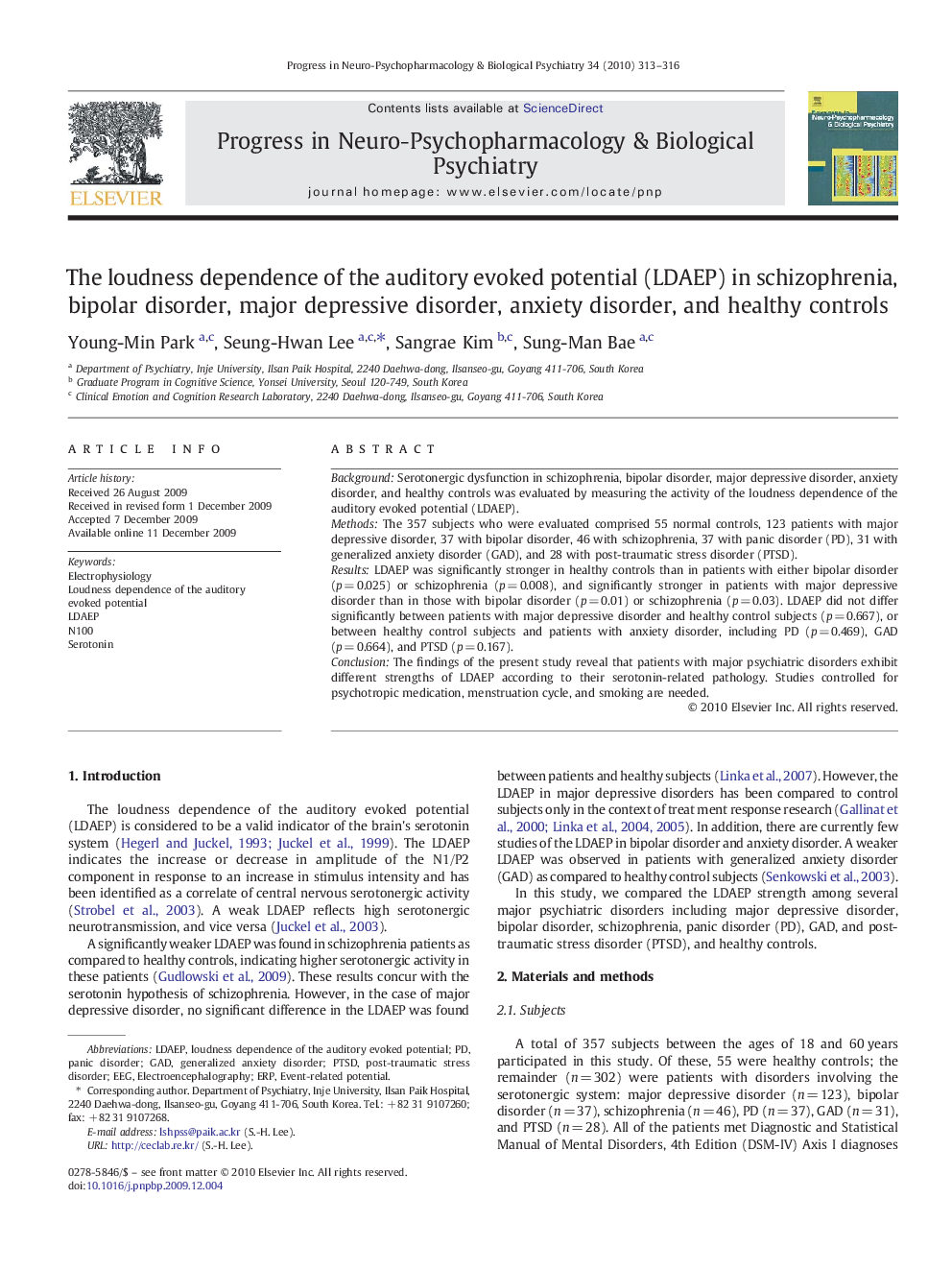| کد مقاله | کد نشریه | سال انتشار | مقاله انگلیسی | نسخه تمام متن |
|---|---|---|---|---|
| 2565566 | 1128062 | 2010 | 4 صفحه PDF | دانلود رایگان |

BackgroundSerotonergic dysfunction in schizophrenia, bipolar disorder, major depressive disorder, anxiety disorder, and healthy controls was evaluated by measuring the activity of the loudness dependence of the auditory evoked potential (LDAEP).MethodsThe 357 subjects who were evaluated comprised 55 normal controls, 123 patients with major depressive disorder, 37 with bipolar disorder, 46 with schizophrenia, 37 with panic disorder (PD), 31 with generalized anxiety disorder (GAD), and 28 with post-traumatic stress disorder (PTSD).ResultsLDAEP was significantly stronger in healthy controls than in patients with either bipolar disorder (p = 0.025) or schizophrenia (p = 0.008), and significantly stronger in patients with major depressive disorder than in those with bipolar disorder (p = 0.01) or schizophrenia (p = 0.03). LDAEP did not differ significantly between patients with major depressive disorder and healthy control subjects (p = 0.667), or between healthy control subjects and patients with anxiety disorder, including PD (p = 0.469), GAD (p = 0.664), and PTSD (p = 0.167).ConclusionThe findings of the present study reveal that patients with major psychiatric disorders exhibit different strengths of LDAEP according to their serotonin-related pathology. Studies controlled for psychotropic medication, menstruation cycle, and smoking are needed.
Journal: Progress in Neuro-Psychopharmacology and Biological Psychiatry - Volume 34, Issue 2, 17 March 2010, Pages 313–316